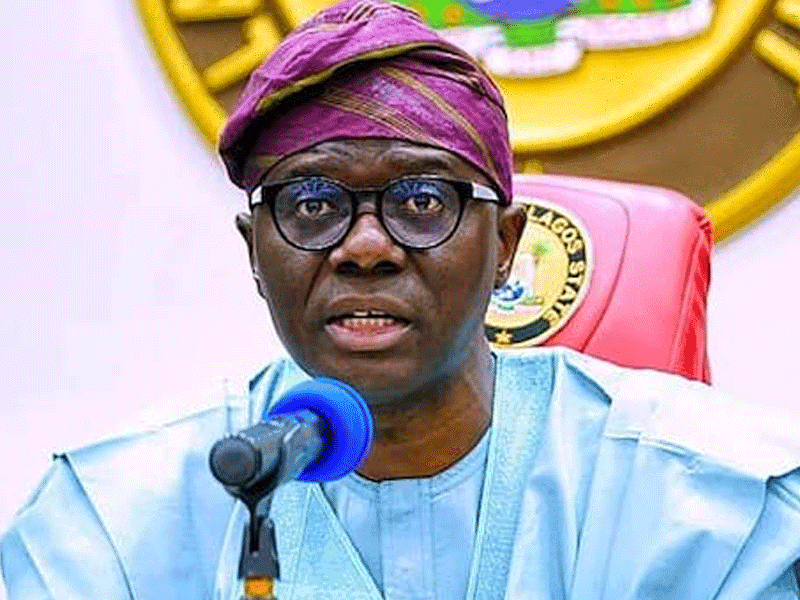Sanwo-Olu: The Strategist Behind Lagos’ Transformation
By Gboyega Akosile
In an era where public office is often associated with privilege rather than performance, Lagos State Governor Babajide Sanwo-Olu is emerging as a rare exception—more of a statesman than a politician. Amidst Nigeria’s turbulent political climate, Sanwo-Olu has maintained a calm, strategic approach to governance, earning praise for his transformative efforts in infrastructure, transportation, and youth empowerment.
Governor Sanwo-Olu’s leadership has been tested on many fronts. From managing the COVID-19 crisis to steering Lagos through the emotional aftermath of the EndSARS protests, the governor has remained composed, navigating complex political and social challenges without resorting to theatrics. His calm demeanor belies a calculated strategy that continues to yield tangible results.
One of the most prominent achievements of his administration is the ongoing overhaul of the state’s transportation system. The flagship project, the Lagos Rail Mass Transit (LRMT) Red Line, represents a significant milestone. Commissioned by President Bola Ahmed Tinubu, the first phase of the 37-kilometer rail line—stretching 27 kilometers from Agbado in Ogun State to Oyingbo in Lagos—includes eight stations and is designed to drastically reduce travel time in Africa’s most populous city.
Constructed over 30 months, the Red Line leverages shared tracks with the Nigerian Railway Corporation’s Lagos-Ibadan route. According to Sanwo-Olu, the project was supported by funding from the Central Bank of Nigeria and three major banks—UBA, First Bank, and Zenith Bank. Rolling stock was sourced from the United States, United Kingdom, and China.
The line’s initial capacity of 250,000 daily passengers is expected to scale up to 750,000 as more trains are integrated, making it one of the largest intra-city rail systems in West Africa.
Complementing the rail expansion, the state government also commissioned five new flyover bridges at major junctions—Oyingbo, Yaba, Ikeja, Agege Pen Cinema, and Mushin—to reduce the risk of collisions between trains and vehicles.
Beyond rail transport, the Sanwo-Olu administration is also boosting marine transportation. Fifteen high-capacity ferries, built locally but fitted with foreign-sourced engines, were launched last year to enhance connectivity via Lagos waterways. These ferries are part of a broader 25-vessel initiative aimed at easing pressure on roads while promoting local manufacturing.
The state is also exploring two additional rail lines—the Green Line, spanning 71.4 kilometers from Marina to the Lekki Free Trade Zone, and the Purple Line, running 53.4 kilometers from Ojo to Mowe. Long-term plans include the Orange and Yellow Lines, signaling Lagos’ ambition to become a true mega-city with a modern, multimodal transport system.
Youth empowerment has been a consistent theme of Sanwo-Olu’s tenure. Thousands of jobs have been created through transport initiatives alone. Over 1,800 positions were generated via Lagos Bus Services Limited (LBSL), while 1,000 more came through the Blue Line and Red Line rail projects. The LAGRIDE smart taxi scheme has also added over 1,000 opportunities, and nearly 3,000 drivers have been trained and employed through the LBSL academy.
In terms of road infrastructure, the administration has delivered 172 roads covering nearly 178 kilometers and is working on an additional 253 projects totaling over 298 kilometers of roads and bridges. These were milestones highlighted during Sanwo-Olu’s first year in his second term.
Despite the political noise, the Lagos governor remains understated in style. Following the philosophy of Benjamin Disraeli—”never complain, never explain”—Sanwo-Olu prefers to let his results speak. “Let our performance speak for us,” he often says, avoiding excessive publicity even for landmark projects.
President Tinubu, at the Red Line’s commissioning, praised Sanwo-Olu and noted the pivotal role of the Lagos Metropolitan Area Transport Authority (LAMATA)—an agency Tinubu established during his tenure as Lagos governor more than two decades ago, with Sanwo-Olu then part of the foundational team.
In a state as complex and densely populated as Lagos, maintaining order while delivering results is no small feat. Sanwo-Olu has leveraged public engagement platforms to ensure buy-in from diverse groups—youth, artisans, traders, and traditional rulers alike—creating a shared sense of purpose.
Six years into his administration, the Lagos governor appears to be leaving a legacy that extends beyond the state’s borders. As the projects multiply and the impact deepens, Sanwo-Olu is proving that with dedication and strategic leadership, sustainable urban transformation is possible. And while his journey is far from over, the results thus far allow him, in the words of Julius Caesar, to say: “I came, I saw, and we’re conquering.”


